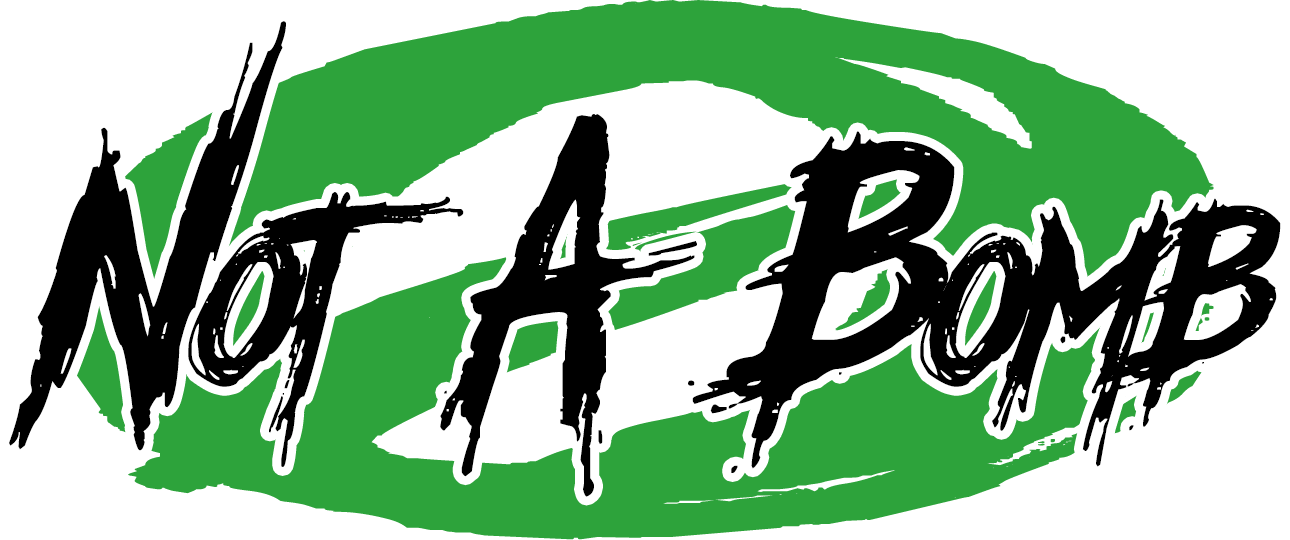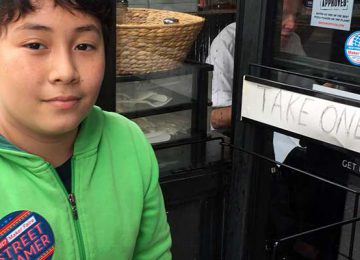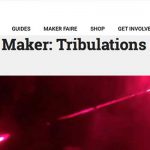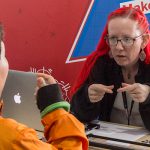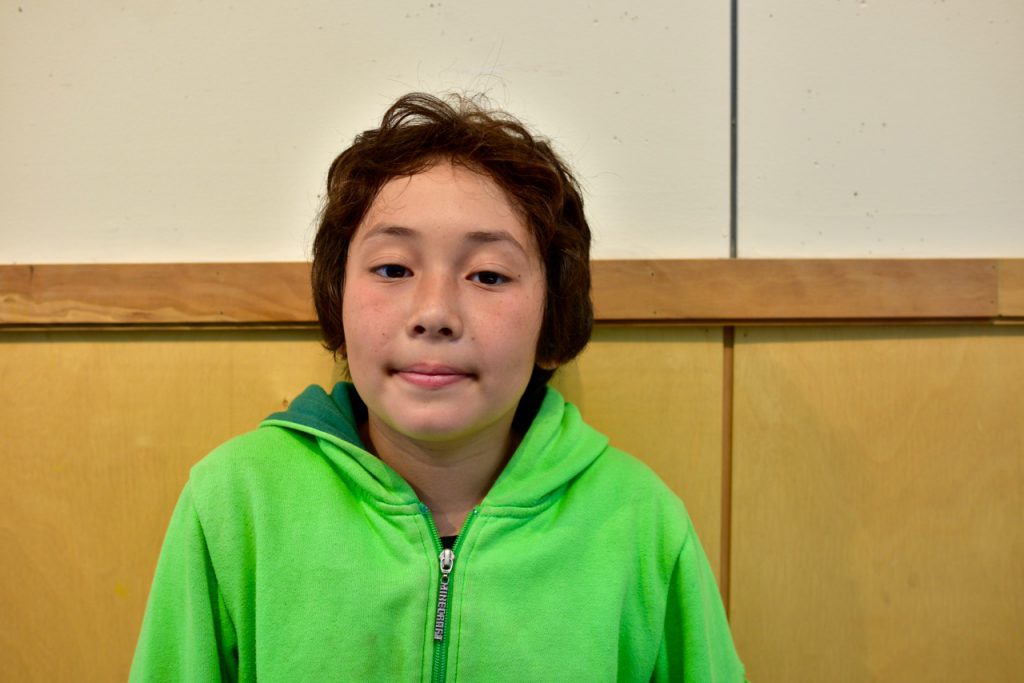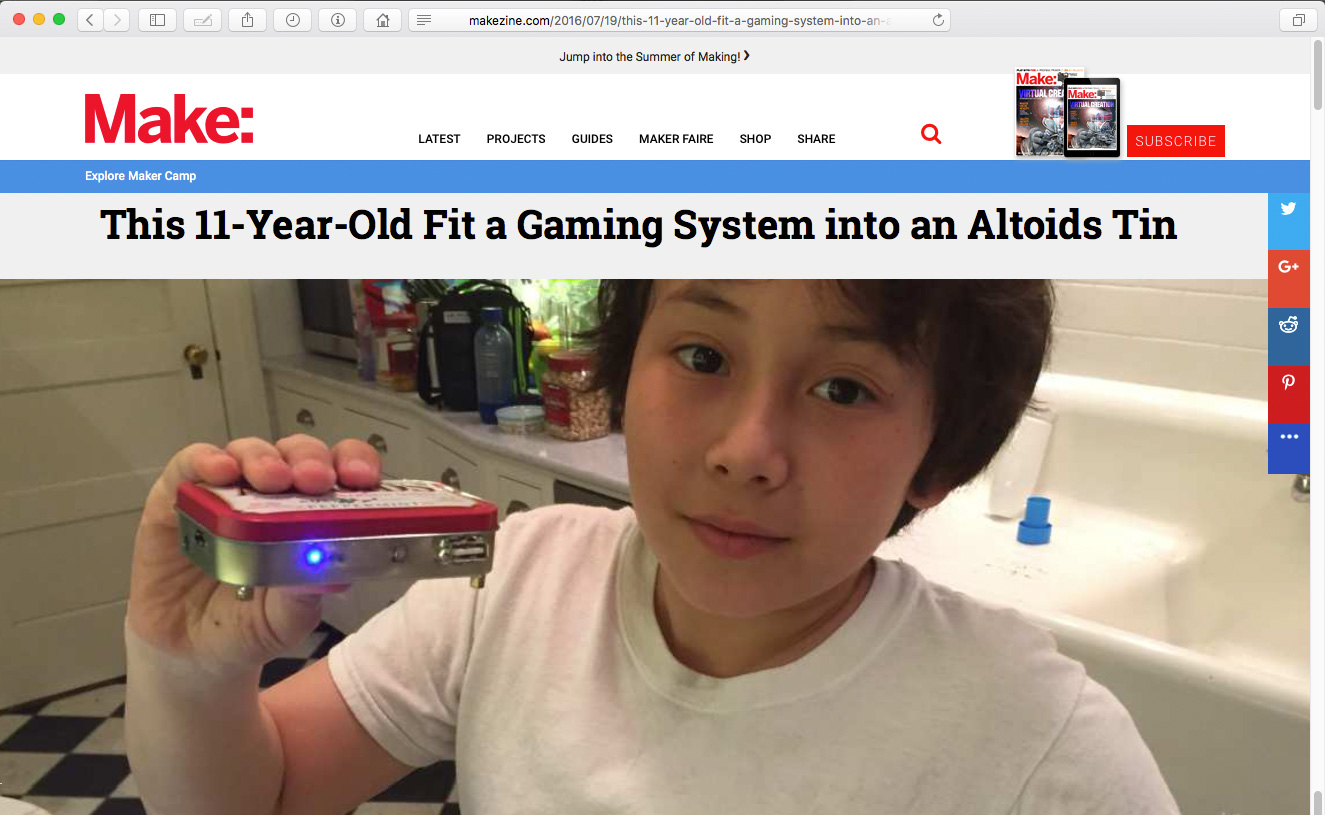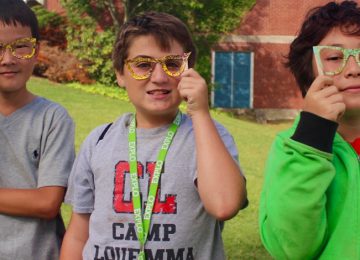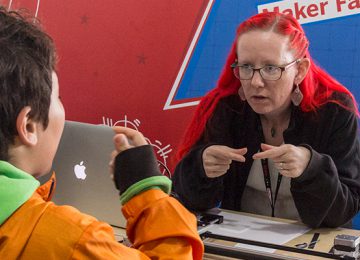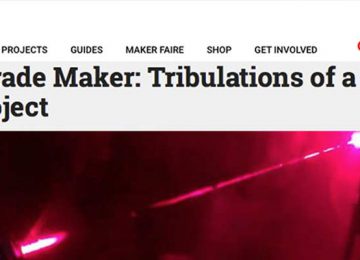By Stephanie LaMont (original article on Explo Website)
Elijah, who most recently fit an entire gaming system into an Altoids tin, discusses how Explo Maker has helped him to cultivate a deep sense of experimentation through the design thinking process.
I think I initially wanted to make an Altoids game because I loved the idea of redeveloping a retro game console. I think the main goal of the project was to make something small and compact that I could carry around with me. But with that idea came a lot of trial and error, so the Pi Zero Altoids box went through a couple testing phases before it was complete. Almost all the Raspberry Pis are a regular USB except for the one I was working with. That caused a problem: I needed to figure out a way to develop a USB port so that I could attach a controller. So I ended up soldering a bunch of wires together to a USB header. Then I realized there was another problem: there was no power indicator. So I had to troubleshoot that whole process all over again.
This was especially important because, say you were playing Legends of Zelda and you were in the middle of a super important level, and all of a sudden your system dies. Nobody ever wants that to happen. So you have to know when you need to save something. What ended up happening is I ripped apart a portable battery from a phone backing and ended up hooking it up to the Pi. Everything worked out. There is still room for redesign — I learned in Explo Maker that that might always be the case, and that’s totally okay.
Maker really taught me about the importance of drafting ideas and working through all the problems even before I got my hands on any material.
In Explo Maker, we were constantly talking about the Designer Maker Process. I think it’s really what guided every day in class. So the design thinking process is that you come with a couple of ideas, you write them down on paper, and discuss what exactly you want your design to do, be, look like, and what materials you would need to make it. I think the last one is important because as much as you want to be creative and stuff, you are still always going to be limited about how it is you are actually going to build it out. From there, you prototype your best refined design. You keep repeating this process on smaller and smaller scales until you feel like you’ve developed your very best version of the original idea. It might be really similar to your original goal, or it may have changed completely.
Before Explo Maker, I would jump right into building the final product. There wouldn’t be any drawing board, no discussion of materials, no troubleshooting the idea itself. Maker really taught me about the importance of drafting ideas and working through all the problems even before I got my hands on any material.
I mean, in terms of materials for Explo Maker, we had so much to work with that it was a little bit easier to come up with more creative designs because we could actually build them out. We had a 3D printer — I used that to make Skeeballs. We had a access to a sewing machine — that was used to make stuffed creatures. We had a Cricket, which is a laser cutter printer. We had a whole wood shop with a bunch of different tools.
We had a 3D printer — I used that to make Skeeballs. We had a access to a sewing machine — that was used to make stuffed creatures. We had a Cricket, which is a laser cutter printer. We had a whole wood shop with a bunch of different tools.
We also learned how to use an X-Acto knife, industrial hot glue guns, and we even learned how to solder stuff when we visited MIT Museum.
I definitely would take Explo Maker again. Because so much of the class is about trying out your own concepts, I think it would feel like a completely different class than this summer.
My favorite part of Maker was the Maker Faire. I developed a motion-sensor Skeeball machine. I actually ended up having to tinker with the design during the actual Faire and the product ended up failing. But, I still think I did a good job developing out an initial prototype. In Explo Maker, we talked a lot about how we shouldn’t be afraid of the word, “failing.” Failure is a part of the process. It’s real, it happens. You just learn to take that failure to guide your next redesign.
In Explo Maker, we talked a lot about how we shouldn’t be afraid of the word, “failing.” Failure is a part of the process. It’s real, it happens. You just learn to take that failure to guide your next redesign.
I think what I’m going to miss the most being at Explo is just getting to be myself. It’s nice to figure out who I am and what interests me without adults making those decisions for me. Here, our instructors are never pushing too much. They never say, ‘You have to do this. You should design that.’ It’s more like they listen to your ideas and say, ‘Yes! How can we make your idea work? Let’s figure it out together.’ I’m never pushed into being someone I’m not here and I think that’s the greatest thing.
